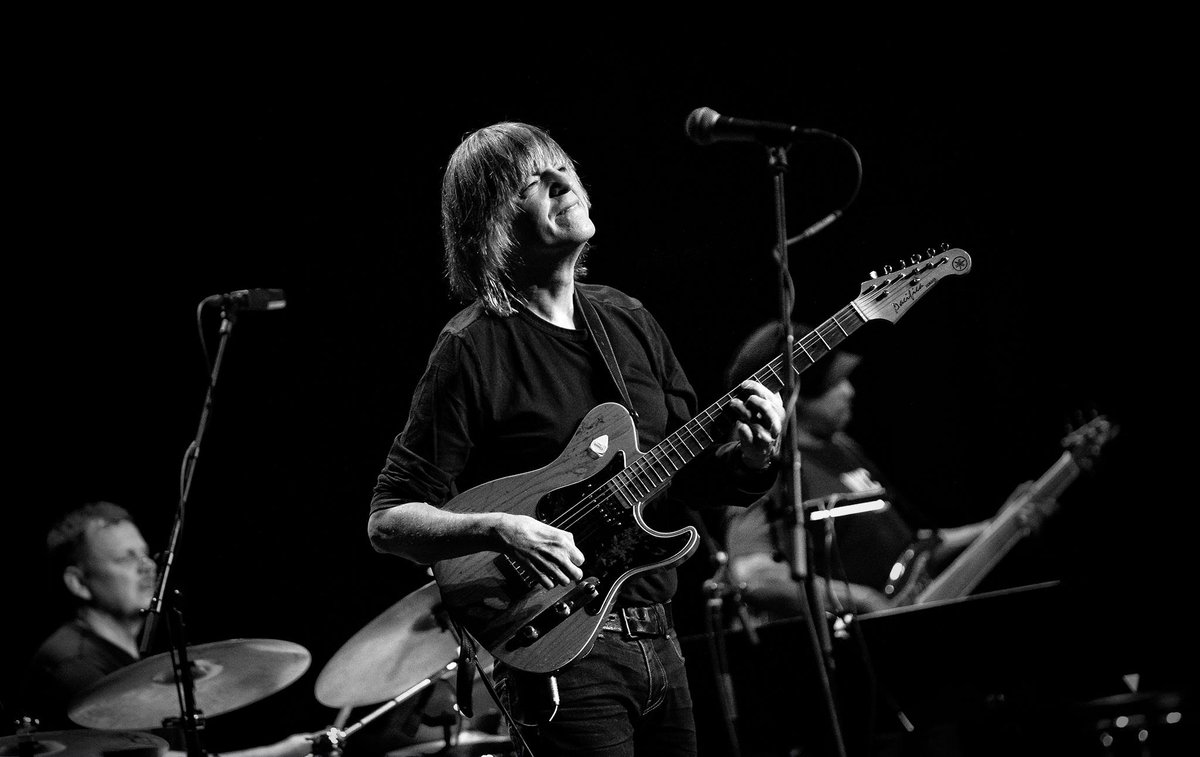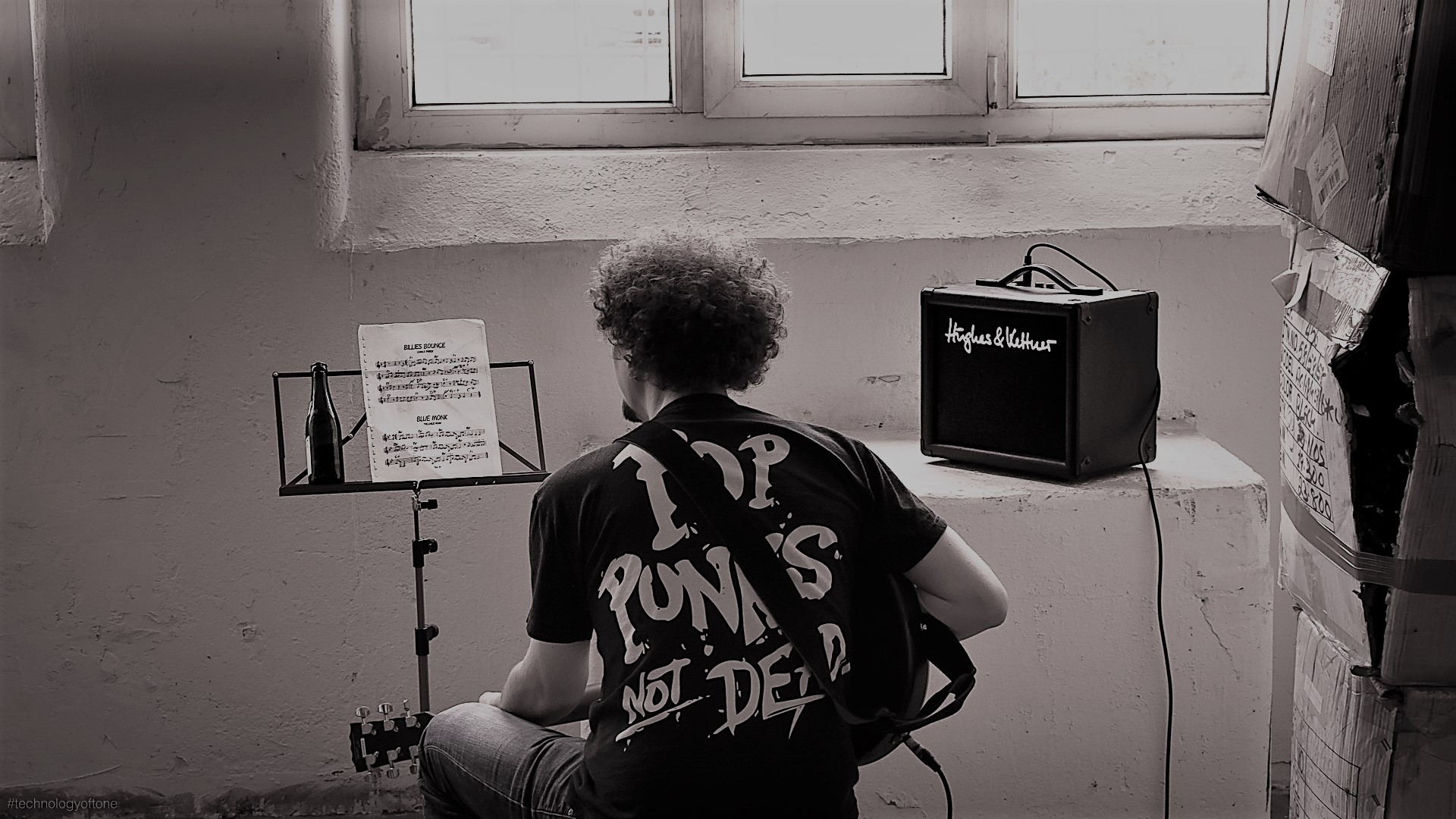You’ll find a ton of information on guitar improvisation on the internet, so much so that sifting through it all would probably take you several lifetimes. There are many ways to approach guitar improvisation and regular readers will know that it’s one of my favorite subjects. Lately, I’ve been trying to simplify my thought process when it comes to improvisation, and this led me to coming up with the following soloing concept.
I remember early on in my guitar journey one of the biggest advances I made was learning the C Major scale all over the fretboard. I practised my scale patterns to the point where I knew them up and down the neck; it was liberating. I milked it for all that it was worth as most of my chord-strumming friends played exclusively in the key of C Major or A Minor, so I could never hit a wrong note.
What I’d like to do here then is recreate that fretboard freedom with a guitar improvisation method that features just two rules:
Rule 1: You play the Dorian Mode over minor chords AND dominant chords (including m9, m11, m13, dominant 7, 9, 11, 13 etc.).
Rule 2: You play the Major Scale over major chords (including major 7, 9, 11 chords etc.).
Wait… Dorian over a dominant chord? Can you do that?
Yes, of course. The Dorian Mode is basically the minor pentatonic with an added 2 and 6, which you’ve probably been playing over a seventh chord in a blues for as long as you can remember. In fact, you can even use the Dorian Mode over the I and IV chord of a blues, but that’s another lesson. When you play the Dorian Mode over a dominant chord, just do what you do with the minor pentatonic: slight bends on the minor third. Don’t worry about the added 2 (9) and 6 as these are great intervals over a dominant chord.
So, for our simplified guitar improvisation method we’ve got one scale that covers all minor and dominant chords and the Major scale covering all the major chords.
Let’s put it on the fretboard.
You need to have a good grasp of major scales up and down the fretboard for this to be effective (if you’re not quite there yet, check out Hacking the CAGED System). The following diagram shows every note from C Dorian up to the 15th fret.

If you know your major scales, you’ll know that C Dorian = Bb Major. The notes in red are the ones that always jump out at me when I’m working out what major scale I’m playing. So, if you want to find C Dorian, find C Minor Pentatonic first, then fill in the gaps and you should become aware of what major scale you’re in.
We don’t have to do this for C Major, but what you could do is use the same pattern to relate C Major to C Dorian.

As you can see, if you just shift that little pattern in red up two frets, you’re in the major scale. Or if you’re already in the major scale and you’re looking for the minor scale, shift it down two frets.
If you’re a fan of using the Lydian scale over major chords, then all you have to is take the red notes in the Dorian diagram and shift them down two frets.

This little guitar improvisation method should have you covered in most situations, but if you do come across any rogue chords, you can either use your ears or do what Eric Clapton does in the following rendition of Jeff Beck’s, ‘Cause We’ve Ended As Lovers’, at the Crossroads Guitar Festival featuring Beck himself, Eric Clapton, and Doyle Bramhall II. The track is in C Minor but has some tricky changes to navigate that Beck does take into account. Clapton, on the other hand, just blows right past them with C Minor Pentatonic/Aeolian runs to great effect. See what you think.
Further Resources
If you liked this glimpse into what the Dorian Mode can do for your improvisation skills, check out, ‘The Dorian Improvisation System‘ – it’s a complete guitar improvisation system based on the Dorian Mode.
If you want to get your major scales and modes down, we’ve got the complete practice solution in Major Scale Modes Designed for the Guitar, or if you want the complete picture on chords, major scales, arpeggios, modes and keys, check out Hacking the CAGED System.



